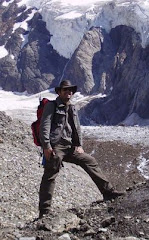 Fig.1. Glaciers in the crater of Mount Saint Helens. The Crater Glacier is shaped in a horseshoe around the new domes that have developed in the crater. The west lobe of the glacier is visible in the bottom right and two more rock glaciers can be seen to the left of the east lobe (from Wikipedia).
Fig.1. Glaciers in the crater of Mount Saint Helens. The Crater Glacier is shaped in a horseshoe around the new domes that have developed in the crater. The west lobe of the glacier is visible in the bottom right and two more rock glaciers can be seen to the left of the east lobe (from Wikipedia).On May 18. 1980 Mount St. Helens landslided/exploded and lost up to 400m in height, and the geoblogosphere is celebrating the event, so must I, not necessarily focusing strictly on the gone mountain, but with a glacier related post.
With the explosion, most of the glaciers surrounding the 2.950m high peak got annihilated. The ice was in part disintegrated or melted and provided huge amounts of water for the lahars, a part of the ice detritus also got embedded in the hot volcanic ash and evaporating suddenly, exploded and created a cratered landscape.
 Fig.2. Mount St. Helens before the May 18, 1980, eruption, showing location and aerial extent of glaciers (modified from Brugman and Post, 1981), from SCHILLING et al. 2004.
Fig.2. Mount St. Helens before the May 18, 1980, eruption, showing location and aerial extent of glaciers (modified from Brugman and Post, 1981), from SCHILLING et al. 2004.Prior to the eruption, 13 small glaciers with a combined surface area of about 5km2 existed on the volcano. From these glaciers the Loowit and Leschi glacier were completely destroyed, and the other glaciers suffered major mass lost.
5 years after the eruption first permanents snow patches were observed in the area between the central dome and the remaining crater walls, these patches in the following years continued to grow, feed by abundant precipitations during wintertime, avalanches and the shadow of the steep walls and protection by isolating rock detritus. In 1996 a small glacier was born, and many names were proposed for it: Amphitheatre Glacier, Crater Glacier, Tulutson Glacier, Spirit Glacier and Tamanawas Glacier, finally it was decided that the youngest glacier of the United States should be named Crater Glacier.
 Fig.3. Extent of ice on Mount St. Helens. Area in white shows location and extent of glaciers as of September 2001. Glacier area, inside the crater, is about 1 km2, whereas the glacier area outside the crater is 0.52 km2, from SCHILLING et al. 2004.
Fig.3. Extent of ice on Mount St. Helens. Area in white shows location and extent of glaciers as of September 2001. Glacier area, inside the crater, is about 1 km2, whereas the glacier area outside the crater is 0.52 km2, from SCHILLING et al. 2004.Crater Glacier after 20 years of growing is today the largest of the remaining glaciers on Mount St. Helens, with an area of 1km2, thickness of 200m and a volume of 120 million m3.
The fast development and young age of various small rock glaciers inside the crater is also very intriguing.
References:
SCHILLING, S.P.; CARRARA, P.E.; THOMPSON, R.A. & IWATSUBO, E.Y. (2004): Posteruption glacier development within the crater of Mount St. Helens, Washington, USA. Quaternary Research 61: 325-329





3 Kommentare:
Thanks for sharing Mount St. Helens: 30 years of posteruption glacier development
Also read these interesting facts about mt st helens
Thank you for giving all this information about mt st helens
Do you want to stargaze at spiti valley
Nice content please checkout my website Pourit.in
Kommentar veröffentlichen